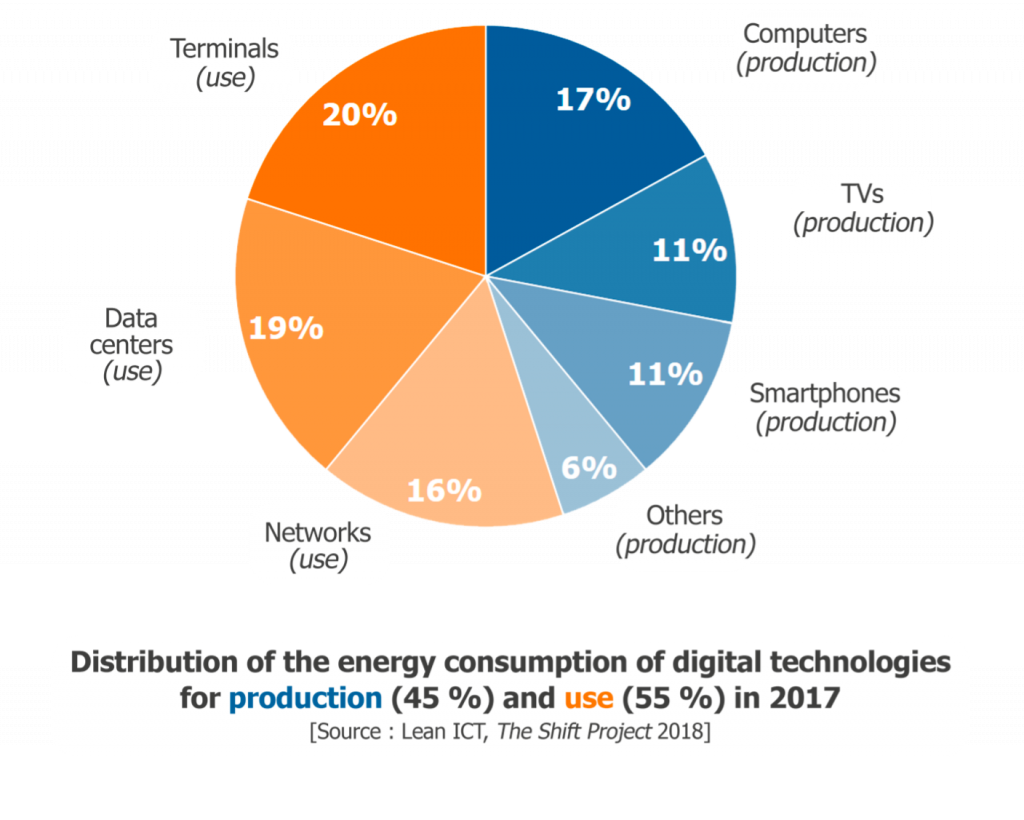Is working from home better for the environment?
/ by Raphael Ketterer | Leave a comment

Working from home has been a popular topic of discussion in recent years. With the technological advances that have made it possible to work remotely, many people are wondering if this is the wave of the future? While there are many benefits to working from home, there are also some environmental concerns that need to be considered.
In this blog post, we will take a look at both the positives and negatives of working from home from an environmental standpoint. We will discuss why working from home is becoming more popular and how it can impact the environment. We will also talk about some of the limits of working from home and offer some tips on how to maintain sustainable IT practices.
Why working from home is popular?
Reduced Commute Time
The average American daily commute is 52 minutes, or almost 6 hours per week. That’s the equivalent of 13 days per year spent in transit! When you work from home, you can eliminate that time and the associated costs (gas, car maintenance, etc.) completely. The time could then be used to spend with family or friend, doing activities you like.
Potentially less distractions
When you work from home, your colleagues are not physically here with you, to come talk about their new car or their holiday in Bali. That can also be false if you have annoying kids that don’t go to school still, the distraction could be higher. The productivity of workers from home is more important than the one in the office and this is one of the reasons.
You have more control over your schedule
One of the benefits of working from home is that you have more control over your schedule. This means that you can better manage your time in order to balance work with other commitments such as family or personal obligations. Additionally, if you need to take a break during the day, you can do so without disrupting your workflow or impacting those around you since there is no need to leave the house or find an available conference room.
How working from home impact the environment?
Less transportation needed
In addition to the time and money savings, working from home also reduces your carbon footprint by eliminating your commute altogether. The average American commuter emits 1,590 pounds of CO2 each year just by driving to and from work. When you telecommute even a few days per week, you can make a significant dent in your annual emissions.
Increased Air Quality
One of the most surprising environmental benefits of working from home is improved air quality, both inside and outside the home. According to the EPA, the air inside our homes is two to five times more polluted than the air outside – and poor indoor air quality is linked to a variety of health problems like headaches, fatigue, and difficulty concentrating.Beliminating your commute you’ll also be reducing your exposure to outdoor pollutants like car exhaust and smog. Moreover, the car you are not taking to go to work is not polluting the local air and can have an important impact of local health.
Less Usage of Office Supplies
Commercial office buildings consume a lot of resources – everything from electricity for lights and computers to paper for printers and photocopiers. When you work from home, you can greatly reduce your office’s resource consumption simply by using less paper and more electronics. For example, try reading documents electronically instead of printing them out, or use video conferencing for meetings instead of flying employees in from all over the country (or world). Another example could be coffee cups and
Limits: the digital footprint of digital
The United Nations’ Intergovernmental Panel on Climate Change (IPCC) says that the Information and Communications Technology (ICT) sector is responsible for about 2 percent of global greenhouse gas emissions. This might not seem like a lot, but it’s actually more than the entire aviation industry. And, according to a report from the Environmental Protection Agency (EPA), this number is expected to increase to 3 percent by 2023.

The CO2 emission of hardware manufacturing
Manufacturing electronic devices and components emits a lot of carbon dioxide (CO2). In fact, the production of just one computer can generate up to hundreds of kilograms of CO2. And, when you consider that there are billions of computers in use around the world, it’s easy to see how this adds up quickly. Moreover, the social conditions of workers extracting the rare metals are difficult. And personal computers are just a little share of the electronic devices. Smartphones, watches, TV’s and all the other connected objects represent 26 % of the digital total emissions.
The CO2 emission of using electronic devices
Not only does manufacturing electronic devices generate a lot of carbon dioxide, but using them also consumes energy which results in emissions. It represents 55 percent of the digital emissions. For example, it takes quite a bit of electricity to power all those computers, smartphones, printers, and other electronic equipment. But we must take in account the consumption of the datacenters and networks too because it represents the largest share of CO2 emissions when you use a device.
Good practices: how to maintain sustainable IT
Deleted old emails and unused accounts
When you no longer need an account, be sure to delete it. Regularly deleting old emails and attachments can also help reduce the amount of data that needs to be stored, and thus the amount of energy required to power servers. A normal internet user receives 39 emails in average (ContactLab), 281 billion emails have been sent around the world and 4g of CO2 is emitted when sending one email. Taking this data, emails are emitting 410 million tons of CO2, half of the global airplanes’ emissions.
Don’t hesitate to turn off your computer and your WIFI off at night.
By turning off your computer at nigh you can save money and reduce your carbon footprint. 40w per day is used when computers are not turned off at night, that’s 4$ cent per day or 14$ per year. Unused electronic machines not turned off at night could emit up to 20 million tons of CO2, as much as 4m cars.
Use WIFI instead of mobile data
Connecting to a mobile data internet connection instead of a WIFI emit 2 to 3 times more CO2. Sometimes it could be complicated to find the WIFI password but, for the environment, you can do it.
Watch lower quality videos
Sometime is useless to watch the last Netflix movie in 4K on your brand-new TV. Or even to watch full HD videos on your smartphone. Indeed, video streaming is the largest share of online data consumptions and therefore, the largest CO2 emission source. Lowering the video quality from 4K of full HD to 720p, it can reduce by 2 the CO2 emissions. “the emissions generated by watching 30 minutes of Netflix (1.6 kg of CO2) is the same as driving almost four miles.”
Conclusion
Overall, working from home has a positive impact on the environment. By eliminating commuting, working from home reduces emissions and improves air quality. In addition, working from home can help reduce office supply consumption. However, it is important to be aware of the potential energy consumption of IT when working from home. Good practices such as deleting unnecessary accounts and old emails can help offset this impact.
Related articles
Buy our products !
References:
https://news.un.org/fr/story/2022/04/111762
https://research.com/education/how-to-manage-digital-footprint
•https://circularcomputing.com/what-is-sustainable-it/
https://icytales.com/what-is-a-digital-footprint-10-best-measures-to-mitigate-digital-footprint/
https://learnenglishteens.britishcouncil.org/skills/reading/b2-reading/your-digital-footprint
https://www.capgemini.com/gb-en/insights/expert-perspectives/are-you-aware-of-your-digital-carbon-footprint/
https://climarisq.ipsl.fr/en/emissions-co2-et-numerique/










